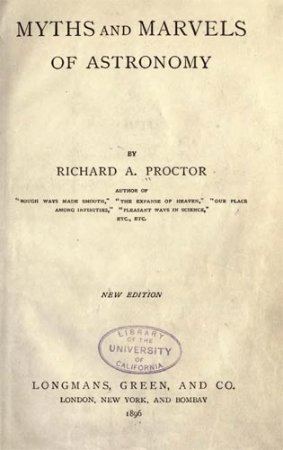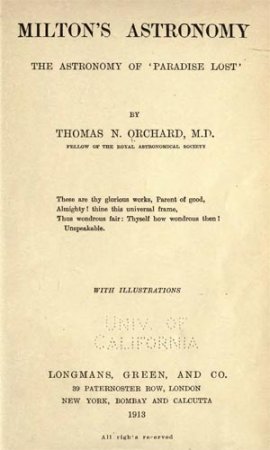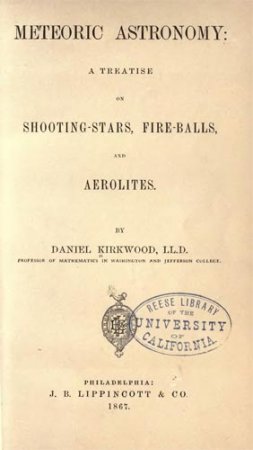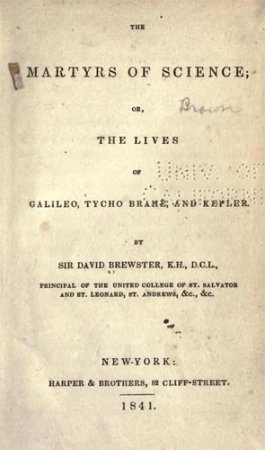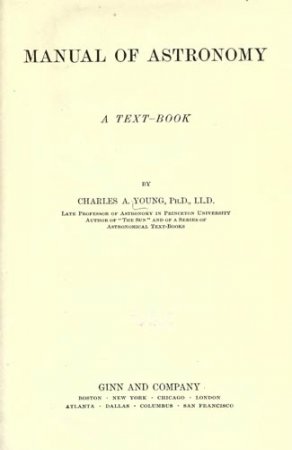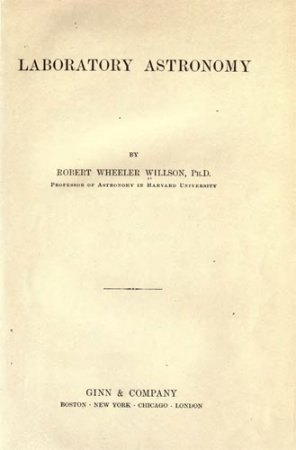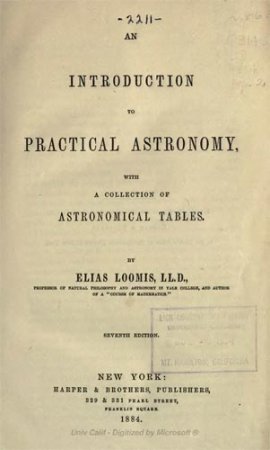НавигацияАрхив новостейСтатистика |
Myths and Marvels of AstronomyTHE chief charm of Astronomy, with many, does not reside in the wonders revealed to us by the science, but in the lore and legends connected with its history, the strange fancies with which in old times it has been associated, the half-forgotten myths to which it has given birth. In our own times also, Astronomy has had its myths and fancies, its wild inventions, and startling paradoxes. My object in the present series of papers has been to collect together the most interesting of these old and new Astronomical myths, associating with them, in due proportion, some of the chief marvels which recent Astronomy has revealed to us. To the former class belong the subjects of the first four and the last five essays of the present series, while the remaining essays belong to the latter category. Milton's AstronomyMANY able and cultured writers in expatiating on the poetic genius of Milton have favoured us with elegant dissertations appreciative of the charm and sublimity of his harmonious verse. But, in discoursing on Milton's astronomy, the Author has ventured to contribute a volume, to some extent based upon an earlier work devoted to the same subject, which, whilst containing a new interpretation of certain passages in the ' Paradise Lost/ and upholding views differing from those expressed by the ablest commentators, may yet, he hopes, be interesting and instructive to the general reader. Perhaps the choicest passages in Milton's poems are associated with astronomical allusion, and it is chiefly to the exposition and illustration of these that this volume is devoted. Meteoric AstronomyARISTOTLE and other ancient writers regarded comets as meteors generated in the atmosphere. This opinion was generally accepted, even by the learned, until the observations of Tycho, near the close of the sixteenth century, showed those mysterious objects to be more distant than the moon, thus raising them to the dignity of celestial bodies. An achievement somewhat similar, and certainly no less interesting, was reserved for the astronomers of the nineteenth century. This was the great discovery that shooting- stars, Jire-balls, and meteoric stones, are, like comets, cosmical bodies moving in conic sections about the sun. DR. H ALLEY was the first to foretell the return of a comet, and the year 1159 will ever be known in history as that which witnessed the fulfillment of his prophecy. Manual of Spherical and Practical AstronomyTHE methods of investigation adopted in this work are in accordance with what may be called the modern school of practical astronomy, or more istinctively the German school, at the head of which stands the unrivalled BESSEL. In this school, the investigations both of the general problems of Spherical Astronomy and of the Theory of Astronomical Instruments are distinguished by the generality of their form and their mathematical rigor. When approximative methods are employed for convenience in practice, their degree of accuracy is carefully determined by means of exact formulae previously investigated ; the latter being developed in converging series, and only such terms of these series being neglected as can be shown to be insensible in the cases to which the formulae are to be applied. A.nd it is an essential condition of all the methods of computation from data furnished by observation, that the errors of the computation shall always be practically insensible in relation to the errors of observation : so that our results shall be purely the legitimate deductions from the observations, and free from all avoidable error. Manual of AstronomyTHE present volume has been prepared in response to a rather pressing demand for a text-book intermediate between the author's Elements of Astronomy and his Greneral Astronomy. The latter is found by many teachers to be too large for convenient use in the time at their disposal, while the former is not quite sufficiently extended for their purpose. Lectures of practical Astronomy and Astronomical InstrumentsI BEGAN in the year 1843 a Course of Lectures on Practical Astronomy and Astronomical Instruments, having been at that time seven years Director of the Cambridge Observatory. Lectures on these subjects had already been given by Dr Peacock as Lowndean Professor, which he discontinued on the understanding that I would undertake to carry them on. The circumstances that an Astronomical Observatory so well appointed as that of Cambridge was near at hand, and was provided with various instruments of first-rate quality, appeared to me to give facilities for lecturing on Practical Astronomy which ought to be taken advantage of ; and accordingly I commenced lecturing in the abovenamed year, having previously produced a 'Syllabus' of the subjects of the lectures, and procured a considerable number of wooden models, which, together with some apparatus that had been collected by Professor Peacock, I made use of in conducting and illustrating the Lectures, I had also the advantage of having at command several portable instruments pertaining to the Observatory. At the end of the Syllabus a list of formulae applicable to the reduction of astronomical observations was introduced, accompanied by brief demonstrations... Laboratory AstronomyTHE subjects treated in elementary text-books of astronomy which are most difficult and discouraging to the beginner are those which deal with the diurnal motion of the heavens and the apparent motions of the sun, moon, and planets among the stars. A clear conception of these fundamental facts is, however, necessary to a proper understanding of many of the striking phenomena to which the study of astronomy owes its hold upon the intellect and the imagination... An Introduction to Practical AstronomyTHE rapid advance in the cultivation of Practical Astronomy which has recently been made in the United States is one of the most encouraging features of the age. It is less than twenty-five years since the first refracting telescope, exceeding those of a portable size, was imported into the United States, and the introduction of meridional instruments of the large class is of still more recent date. "We may now boast of two Observatories, liberally equipped with instruments of the best class, and provided with a permanent corps of observers, as also a considerable number of other establishments more or less complete, and a still larger number of telescopes of dimensions adequate to be employed in original research... An Introduction to AstronomyTHE great progress of astronomical discovery, during the *ast few years, has induced the author of this work to prepare, with much labor and expense, a new edition, which should fully exhibit the features of the science in their latest physiognomy. Since the stereotype edition was first published, in 1844, numerous and important discoveries have been made, both in the solar system and among the fixed stars. The dimensions of the planetary system have been nearly doubled by the addition of the planet Neptune ; the number of the Asteroids has been increased from four to twenty-seven ; interesting discoveries have been made in the Rings of Saturn, and an eighth member has been added to his retinue of satellites ; and the subject of Comets has received a new impulse by the appearance of the remarkable cornet of 1843... |
ПопулярноеКалендарь
ОпросОцените дизайн сайта
Немного рекламы |
|||||||||||||||||||||||||||||||||||||||||||||||||
